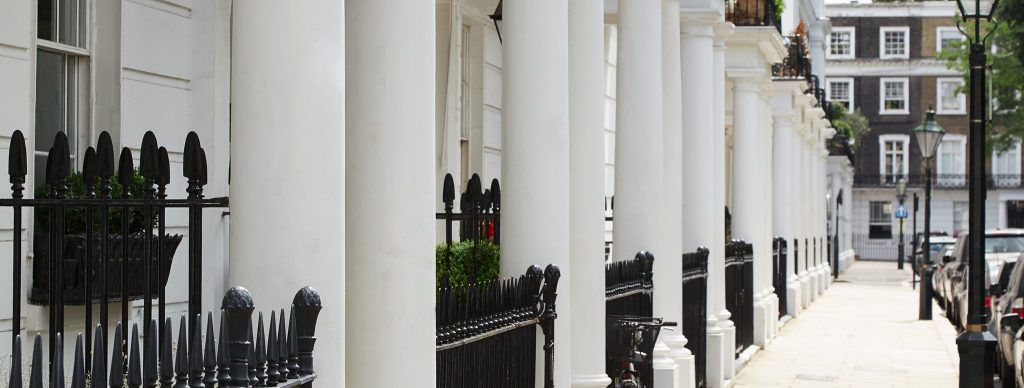Throughout the onset of the pandemic, we all watched with great interest as speculators considered a potential crash in the London property market with a recovery either impossible or very slow. It was all too easy for many commentators and vendors to take the disaster line, but the property market is cyclical and has survived enough wars, recessions and shattering terrorist events to teach us that property recovers.
The new year has so far been defined by high demand and low supply within the prime London property market. Knight Frank has reported that the number of new buyers is 72% above the five-year average, while the number of sales instructions is down by 12% and the return to more balanced conditions doesn’t appear imminent.
Whilst we are seeing normal levels of new instructions for this time of year, the number of new buyers into the market is unrelenting and the noticeable return of the overseas purchaser extremely likely.
It is a similar story throughout the rental market, values are up on average 5% from their pre-pandemic level. It is a tough time to be a tenant now, with rents rising and the availability of stock low.
However, supply adjustments are being made and the rental value growth should slow towards the end of the year.
Although the UK property market continues to be the great enricher of the last 60 years, it is important to take stock and modify to the prevailing conditions. We’ve included a few key trends to consider.
Stamp Duty Land Tax
Baby boomers and the elderly have been enduring heavy criticism for stalling the supply chain and not downsizing / selling their family homes. This particularly applies to areas of Southwest London that have endured an explosion of interest since the on-set of the pandemic. We have seen two key trends, families of younger children who want to move out of London but are held back by the lack of country stock and the elderly who do not want to pay Stamp Duty and other associated costs with selling. The discussions of removing SDLT continues to hover over the market, and it is an issue that needs to be addressed urgently by the government. However, we do not foresee any change in the immediate future and continue to advise our clients to put themselves in the strongest possible position to buy.
Yield vs capital growth
As we all know, London is a breeding ground for the individual investor hunting for a high yielding investment property and for a very good reason, it is their income. Achieving a high yield, however, is becoming increasingly at the expense of capital growth and security of investment. Long gone are the days of easily flipping a property and a higher focus is being placed on the security of the investment, it’s capital growth potential and re-saleability. This does not mean overpaying for an investment, but sourcing property in a location that resonates with domestic and international tenants and buyers as established and secure. Whether you are buying new-build or period property you must consider the 15-minute walkable neighbourhood. Whereas, prior to the pandemic more focus would be placed on commutability. The flexible working model means that the local amenities are more important than ever.
Again, during the last two years Southwest London has consistently been the most robust market playing well to the increased family demand with annual rental growth in 2021 increasing by 6.9% above pre-pandemic levels. Other key locations to note are, Hampstead, Notting Hill, Hammersmith to name a few.
Corporate Rental Exodus / Brexit?
We will have all been drawn in by fear mongering headlines during the peak of the Brexit discussions, suggesting a mass exodus of large corporations from London to alternative cities. Naturally, through the pandemic, demand plummeted and popular locations for relocating corporate tenants such as the City & Fringes had an incredibly tough time, with rental values declining into double figures. It has been well reported that banks have moved some senior employees to their EU offices as European regulators push banks (Morgan Stanley, Barclays & Goldman Sachs) to better staff their EU offices as travel restrictions ease, but it has not been the dramatic shift that was once thought possible. The demand for corporate lets has been largely driven by the 20%+ rise in tech, media and telecoms positions available in London. After Silicon Valley, London has taken second place for tech development across the globe and this is reflected in venture capital and private equity flooding the city, corresponding with the increasing demand for high quality properties for staff relocating to or moving within London. In terms of notable moves, we will follow closely the Battersea Power Station development with Apple’s move pending, this year, they have over 500,000 sq ft totalling around 40% of the total commercial space available at the site. This will undoubtably drive rental demand within the development and high-quality stock in the surrounding area.
The main takeaway from this insight is, if you make an informed purchase with a mid to long-term view (5-10 years), London property is still and will remain a strong investment. However, in an evolving and robust market it is easy to overpay for an asset that might not fare well in a tougher market. At Haringtons, we are a truly independent sounding board with expert knowledge of our marketplace.
